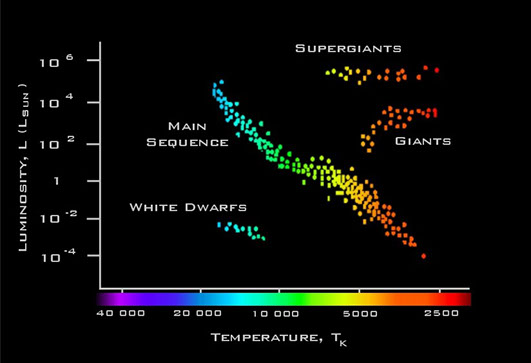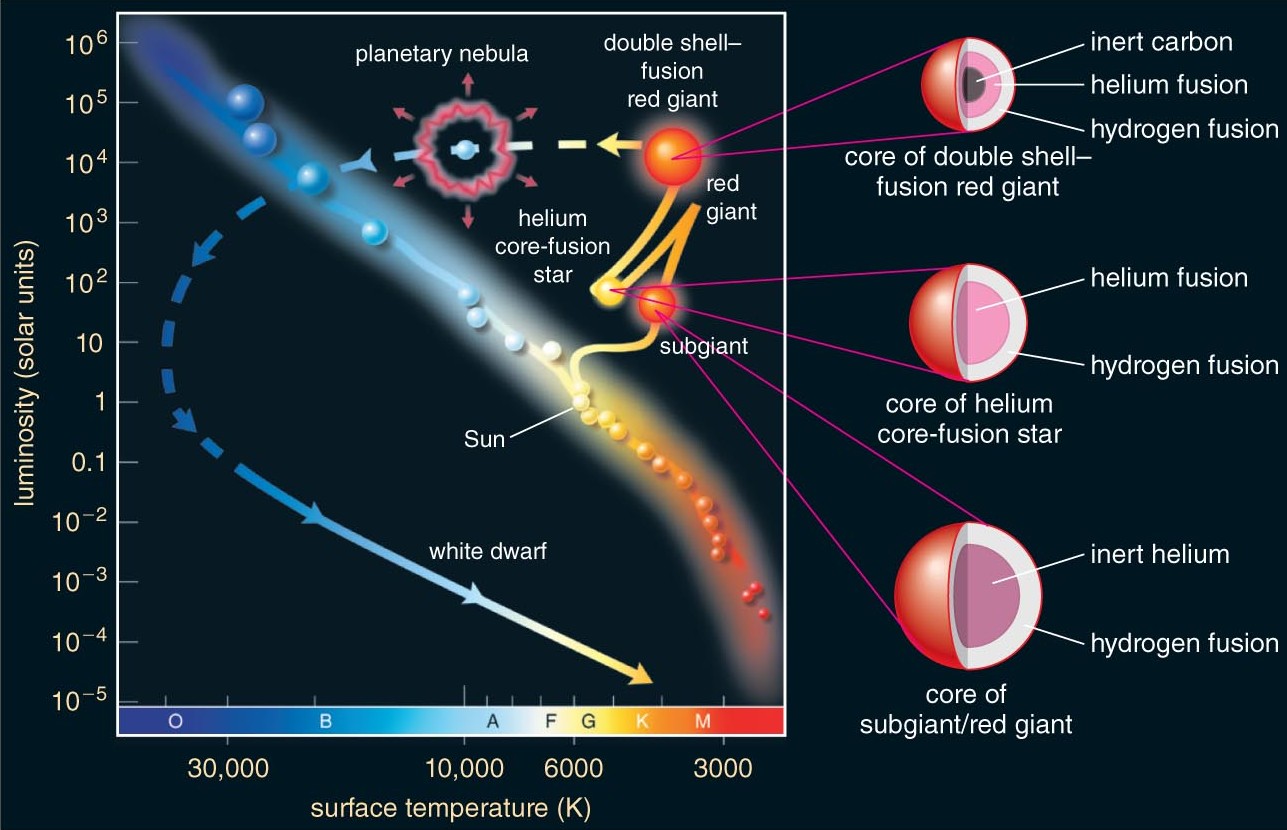Astrophysics 09/10 - Hertzsprung-Russel Diagram and Evolution of Sun-like Stars
1/13
Earn XP
Description and Tags
Name | Mastery | Learn | Test | Matching | Spaced |
|---|
No study sessions yet.
14 Terms
Describe the Hertzprung-Russel Diagram.
Stars are grouped into three (or four) areas depending on their stage.

Where are main-sequence stars found on a HR diagram?
In a long diagonal band through the middle of the diagram.
They have a range of temperatures and brightnesses with strong correlation.
Define a main-sequence star.
Any star that fuses only hydrogen into helium.
Where are Red Giants and red supergiants found on a HR diagram?
In a group in the top-right of the diagram. They are generally cool but bright.
Define a red giant and red supergiant star.
Stars which fuse elements other than hydrogen into helium. Whether they are giants or supergiants depends on their mass
Where are white dwarfs found on a HR diagram?
In the bottom left. They have high temperatures but are low in brightness.
Define a white dwarf star.
Stars where fusion has stopped, and the light produced is transferring away whatever energy is left.
How are stars formed?
Clouds of dust and gas (nebulae) contract under the force of gravity into protostars (incredibly hot areas of matter, but not yet undergoing fusion). The protostars continue to contract and heat up, eventually beginning to fuse hydrogen and becoming a main-sequence star.
Explain why a main-sequence star does not expand or contract.
Fusion of Hydrogen into helium produces radiation pressure to prevent further gravitational collapse after its ignition.
What happens when the hydrogen in the core of a main-sequence star runs out?
No radiation pressure is being produced from fusing hydrogen, so the core collapses under gravity. This generates enough heat to begin fusing hydrogen in the star’s shell, releasing energy and causing the star to expand, becoming a red giant.
The helium core continues to contract intil it is hot enough for helium to fuse into carbon and oxygen, releasing a lot of energy and sending the shell even further out.
What happens when red giant stars stop fusing Helium?
No further fusion can happen, as they are too low mass. The core collapses, and the atmosphere is expelled, leaving a planetary nebula with a white dwarf at the centre (from the core).
What do white-dwarfs become when they lose all energy?
Black dwarfs
What happens to red supergiant stars when they stop fusing helium?
They have enough mass to continue fusing elements up to iron.
How does a sun-like star progress through a HR diagram?
Main-sequence (middle), to red-giant, to white dwarf.
